A Day on the Oxford Canal
There’s nothing like messing about in boats on a warm, late spring day…
The building of the Oxford Canal was first brought into action with the passing of an Act of Parliament in 1769. Beset with difficulties – mostly financial – its total 78 mile length wasn’t completed until 1790. Linking the industrial Midlands region of England with the south of the country, the cost-cutting that was required has allowed the canal to claim it is one of the most scenic. This is partly due to the canal following the contours of the land giving the canal numerous bends, rather than the more usual (and more expensive) building method of cutting a straight line through the landscape.
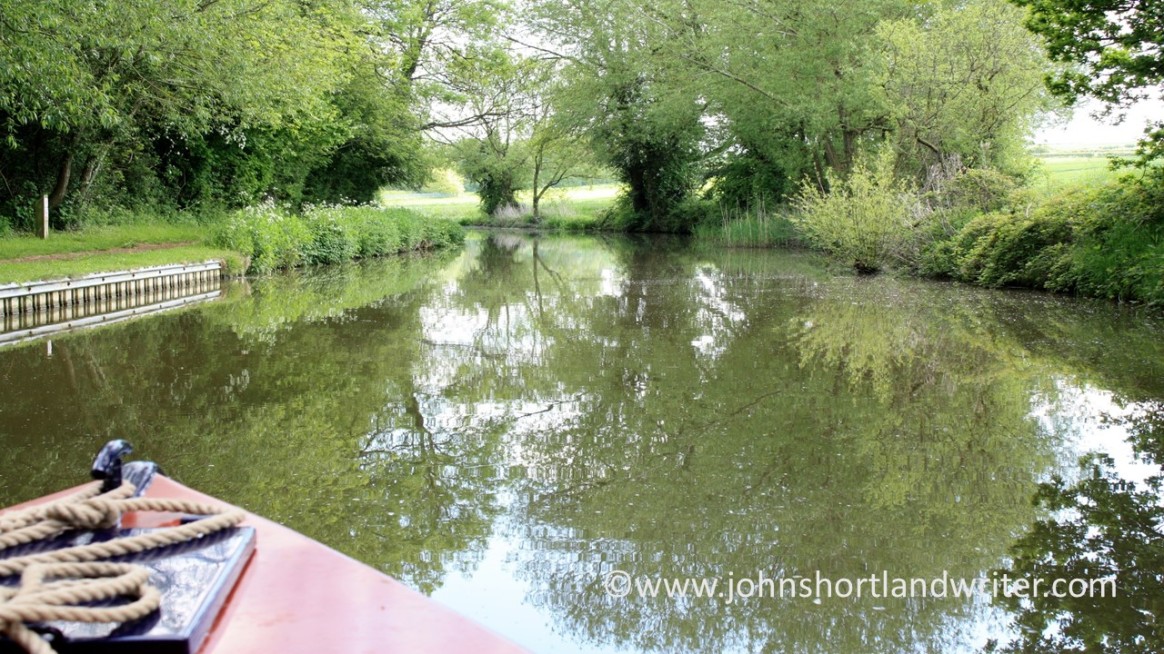
Although the northern section from its start at Coventry to Napton was straightened in the 1820s, the southern section to its end at Oxford where it enters the River Thames (giving access to London) remained unchanged.
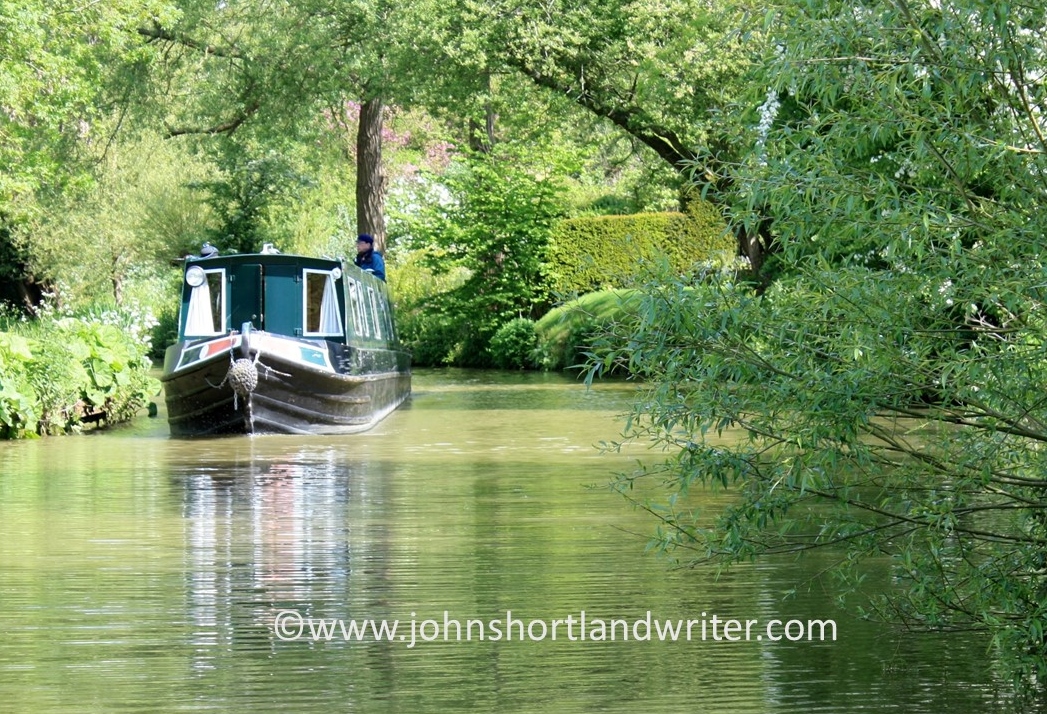
Once completed the canal became one of the busiest and most profitable in England and, unlike many others, prospered even after the coming of the railways. Barges carrying coal to London were still plying their trade as late as the early 1960s. Today, the railway rules and often follows the same route.
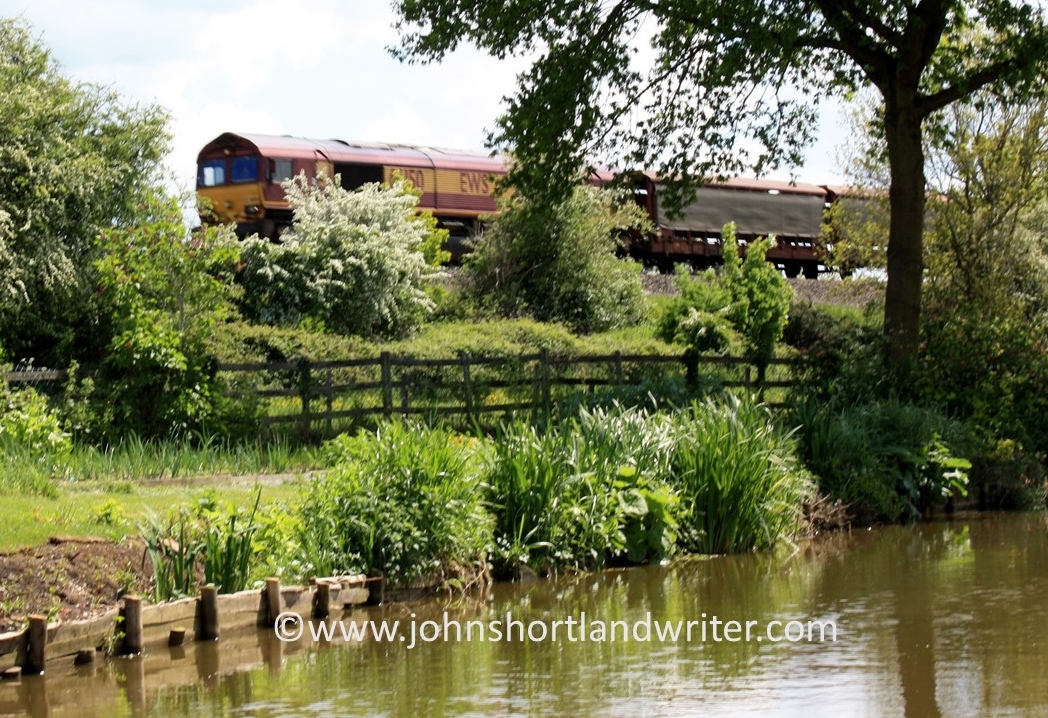
However, the Oxford Canal is still one of the busiest waterways in the country, only now with leisure traffic. On the day of our attempt at barging it was pleasantly quiet and we shared the canal with few others. The only hint of an industrial past was the working barges of the Canal & River Trust, the charity responsible for maintaining the two thousand miles of waterways in England and Wales.
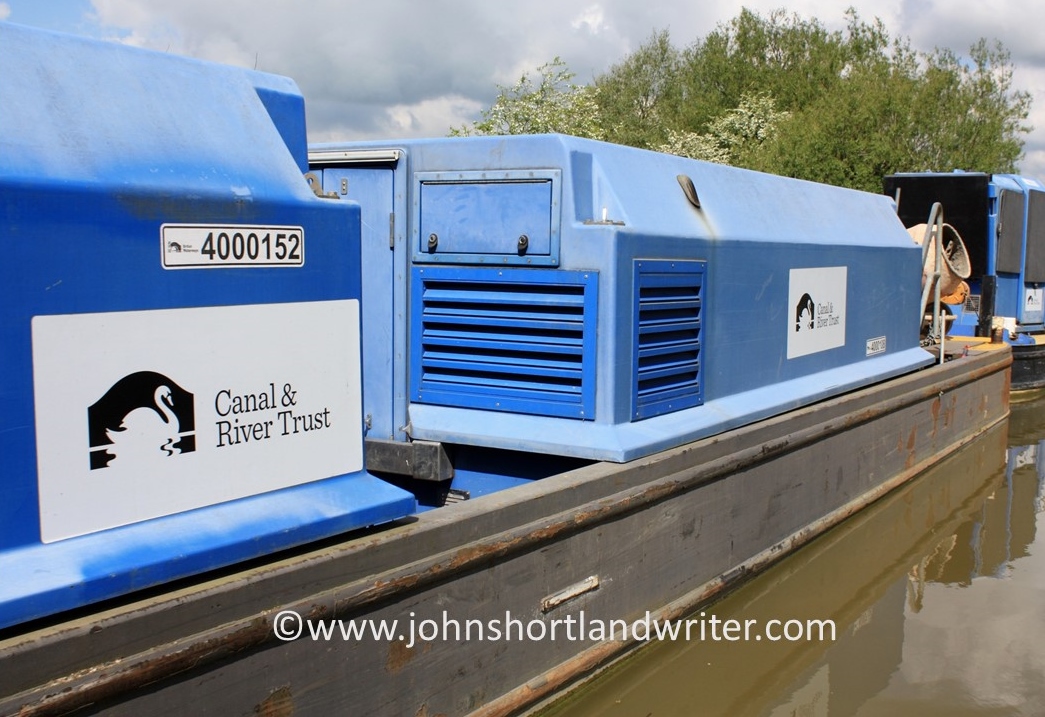
Travelling at a speed slower than walking pace isn’t for everyone – I found it a little frustrating – but it does give ample opportunity to admire the scenery, buildings and wildlife. The tithe barn at Upper Heyford, built around 1400AD, is magnificent. More images of the barn, which is privately owned, can be seen by clicking here.
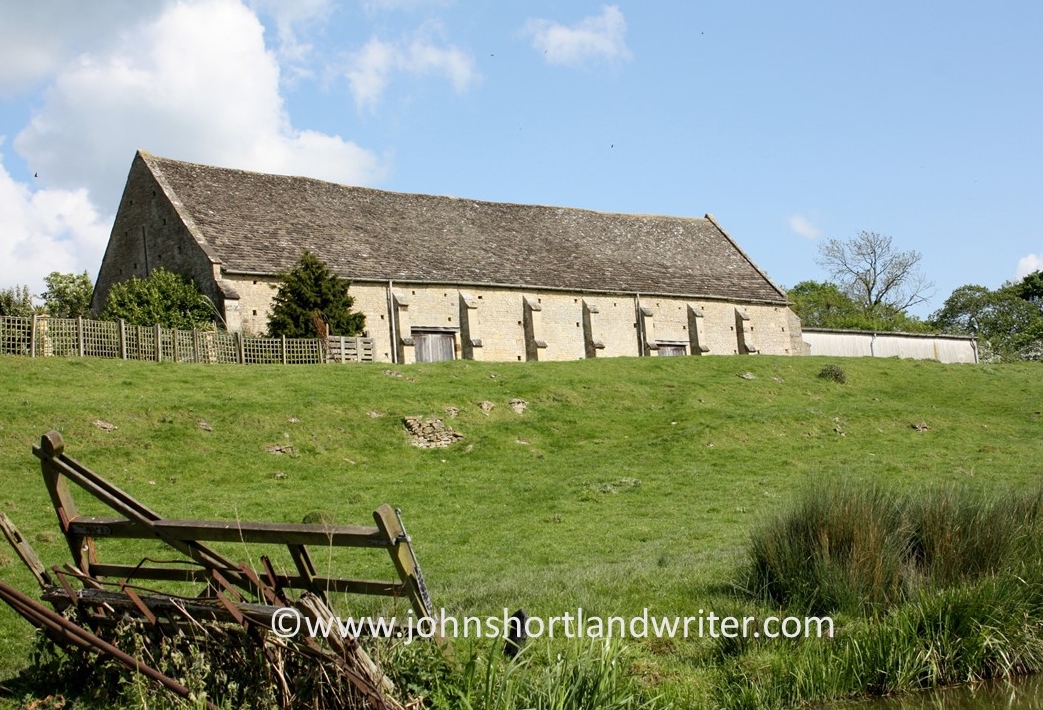

One of the cost-cutting methods used in construction was to incorporate a section of the River Cherwell into the canal. The problem that this created with variable water flow is still an issue today. Another saving more readily visible are the locks: fewer in number and deeper, many have single gates instead of the more usual two.

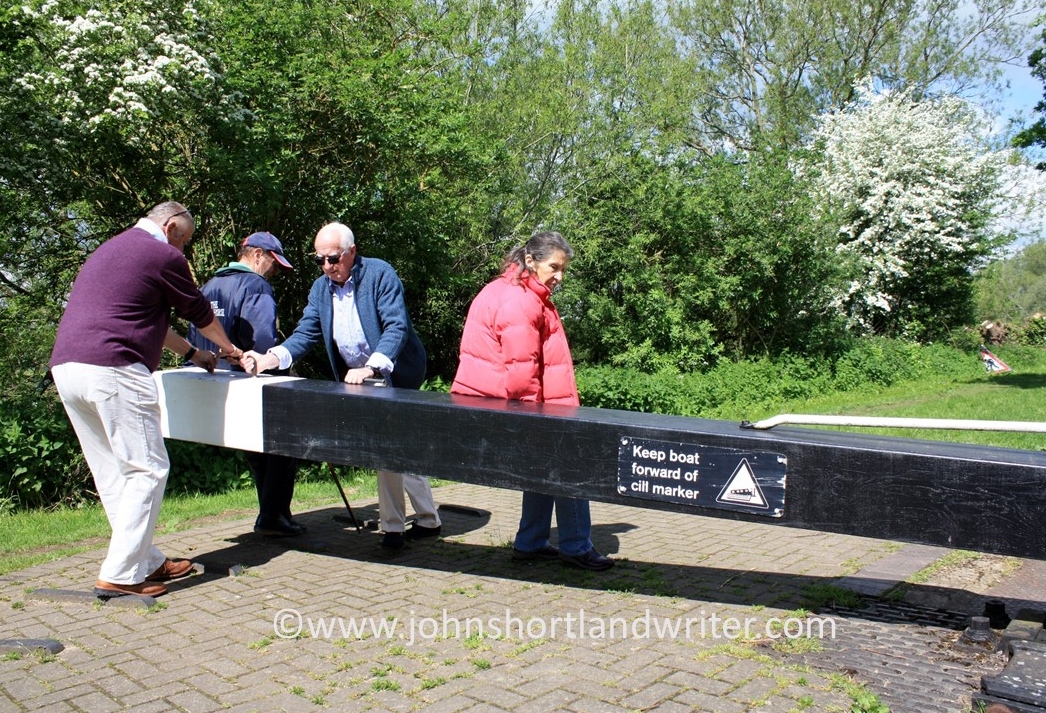
Manoeuvring such a large boat is a surprisingly quick skill to master but there are always other, more savvy boat people around that are happy to assist or advise when needed. Our boat was hired from the yard at Little Heyford and we travelled north, meeting up with friends for a bankside picnic before returning to the marina.
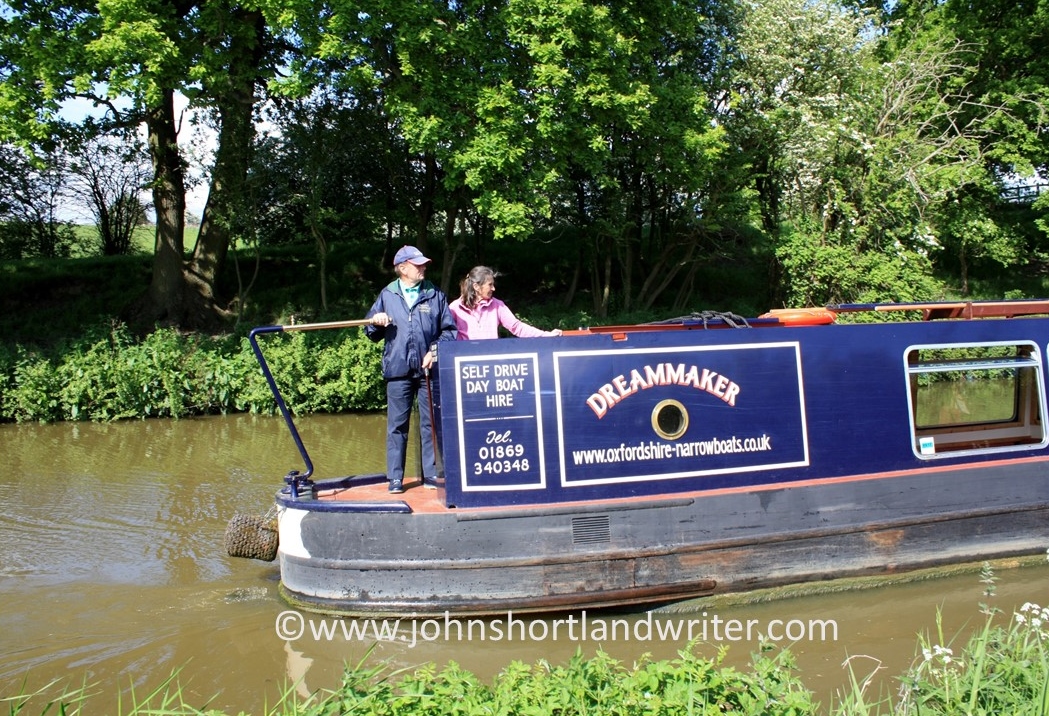
A daytrip – or perhaps a longer holiday on a barge – is definitely to be recommended even though I found the pace a little too slow. The next time I am on one I shall remember the words of Pooh, that wisest of bears: “Rivers know this: there is no hurry. We shall get there one day.”

Click on any of the photos to enlarge
Links:
The Oxford Canal – a more detailed history
The Canal & River Trust
Boat Hire – Lower Heyford
The building of the Oxford Canal was first brought into action with the passing of an Act of Parliament in 1769. Beset with difficulties – mostly financial – its total 78 mile length wasn’t completed until 1790. Linking the industrial Midlands region of England with the south of the country, the cost-cutting that was required has allowed the canal to claim it is one of the most scenic. This is partly due to the canal following the contours of the land giving the canal numerous bends, rather than the more usual (and more expensive) building method of cutting a straight line through the landscape.

Although the northern section from its start at Coventry to Napton was straightened in the 1820s, the southern section to its end at Oxford where it enters the River Thames (giving access to London) remained unchanged.

Once completed the canal became one of the busiest and most profitable in England and, unlike many others, prospered even after the coming of the railways. Barges carrying coal to London were still plying their trade as late as the early 1960s. Today, the railway rules and often follows the same route.

However, the Oxford Canal is still one of the busiest waterways in the country, only now with leisure traffic. On the day of our attempt at barging it was pleasantly quiet and we shared the canal with few others. The only hint of an industrial past was the working barges of the Canal & River Trust, the charity responsible for maintaining the two thousand miles of waterways in England and Wales.

Travelling at a speed slower than walking pace isn’t for everyone – I found it a little frustrating – but it does give ample opportunity to admire the scenery, buildings and wildlife. The tithe barn at Upper Heyford, built around 1400AD, is magnificent. More images of the barn, which is privately owned, can be seen by clicking here.


One of the cost-cutting methods used in construction was to incorporate a section of the River Cherwell into the canal. The problem that this created with variable water flow is still an issue today. Another saving more readily visible are the locks: fewer in number and deeper, many have single gates instead of the more usual two.


Manoeuvring such a large boat is a surprisingly quick skill to master but there are always other, more savvy boat people around that are happy to assist or advise when needed. Our boat was hired from the yard at Little Heyford and we travelled north, meeting up with friends for a bankside picnic before returning to the marina.

A daytrip – or perhaps a longer holiday on a barge – is definitely to be recommended even though I found the pace a little too slow. The next time I am on one I shall remember the words of Pooh, that wisest of bears: “Rivers know this: there is no hurry. We shall get there one day.”

Click on any of the photos to enlarge
Links:
The Oxford Canal – a more detailed history
The Canal & River Trust
Boat Hire – Lower Heyford

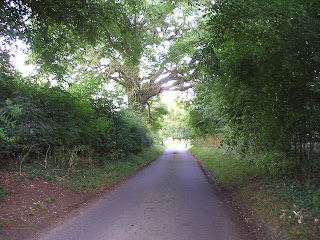
Comments
Post a Comment